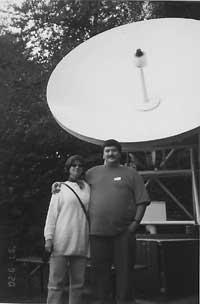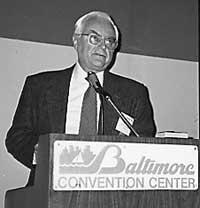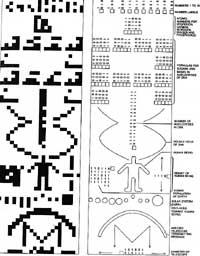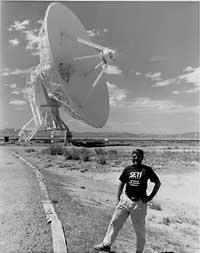Are we alone in the Universe?

Under the starry sky, at night, and nature around us. We fully notice the greatness of the universe. And the questions that usually arise right now come out of our mouth: Are we alone? Is life only on Earth?
To give scientific answer to these questions, the SETI (Search for Extraterrestrial Intelligence) program was created. This program is now better known since the film “Contact” of Hollywood, based on the book of the same name of the researcher and writer Carl Sagan.
Jill Tarter, a scientist who used Sagan to create his own protagonist, summarizes the objective of the SETI program: “We are trying to make an experiment on our outdated technology to believe that we can hear the signal from remote technology with a radio telescope”.1

In short, extraterrestrial civilizations, although they exist, can use as us electromagnetic waves to transmit data. So, we have to do it as we look for a radio program on our home radio: find the frequency of the transmitter. Below a GHz, our galaxy, the Milky Way, emits too much “noise” (synchronous radiation). Above the 10 GHz, the molecules of the atmosphere absorb the waves. Between 1-10 GHz (wavelength between 3 and 30 cm) is what the human being can hear. In this range are the wavelengths of hydrogen (H) and hydroxide (OH), abundant in the Universe. It can be thought, therefore, that aliens can use these two wavelengths.
Presentation of the idea of Nature
In September 1959 the article Searching for Intererstellar Communications was published in the journal Nature. Physicists Giuseppe Cocconi and Philip Morrison explained how radiotelescopes can be used to collect signals from alien civilizations.

In the last part of the article it is clear that Cocconi and Morrison suspected that their proposal would receive criticism: “Readers may think that these speculations are sci-fi (...) Measuring the probability of success is difficult, but if we do not, the probability of success will be zero”.4
In 1960, without knowing the proposal of Cocconi and Morrison, Frank D. The astronomer Drake selected in Green Bank, the National Radio Astronomy Observatory of Virginia, the stars Epsilon Eridani and Tau Ceti, eleven light-years away, to try to locate radio broadcasts. He called him “Ozma Project” in honor of the imaginary Oz. They only found the signal of a spy plane U2, but the project opened the door to systematic search.
Drake Equation and Bioastronomy
In 1961, at the first act of the National Academy of Sciences (NASC), on the occasion of the SET conference, Drake developed the equation that bears his name. This equation measures the amount of technological civilization that may be in the Milky Way, although it can also be used for the entire Universe.
In short, taking into account the data we know, the equation moves in the field of the hypothesis, as the equation is used, since different data can be obtained (see table attached). There is another problem: Do you live outside the Earth, or are you only on Earth, because it is something very curious?

To give hope to SET researchers there is a theory exposed by scientists Charles Darwin, Oparin or Haldane and experienced in 1952 by Stanley Miller and Harold Urey of the University of Chicago. This theory proposes that, due to the energy of the Earth's atmosphere, simple organic molecules were formed. These, through other chemical reactions, became more complex molecules until they obtained the first autoproliferative.7
In addition, after microwave observation, pluriatomic molecules have been found in the interstellar space, many of them organic. Scientists believe that these molecules generate dust in interstellar clouds.
On the other hand, Fred Hoyle and Chandra Wickramasing consider that the organic material that provoked evolution was transported from space occupied by comets and meteorites to Earth.9
Carl Sagan, to show that life is not so rare, invented the principle of “accepting mediocrity.” According to this, Earth is a normal planet, so there may be many others like Earth. This does not mean that there is a life like that of the Earth, since life is universal.

These and other surprising discoveries both on Earth and in space (for example, the fossil microbes of the meteorite coming from Mars) have opened up a new biological field: bioastronomy or the research of life outside the Earth.
SETI after Ozma
In the 1960s the Russians dominated the SETI program. Traditional scientists from the Soviet Republic used omnidirectional antennas to investigate large celestial areas.
In the early 1970s, members of NASA's Ames Research Center (Mountain View, California) began their research with the help of an external group, under the direction of Bernard Olivier of Hewlett Packard Corporation. It was the Cyclops Project, base of the subsequent SETI project.
Subsequently, in the late 1970s, NASA's Ames Research Center (AMC) and Jet Propulsion Lab (JPL) hosted several SETI programs. At AMC they developed the “Target Search” program, which investigated a thousand stars like the Sun. For their part, in JPL began the program “Sky Survey” to find signals in the sky.
Millions of channels
While DNA teams were working, Paul Horowitz of Harvard University manufactured an apparatus called “Sentinel” capable of analyzing 131,000 channels per second. Subsequently, in collaboration with the Planetary Society of Carl Sagan, Horowitz developed the GOAL (Million Channel ExtraTerrestrial Assay) to investigate 8 million channels per second. At the same time, NASA teams made another system like META: MCSA (Multi Channel Spectrum Analyer).
The information received by these systems produces a billion bits, which must be investigated immediately. According to the astrophysicist and SET member of the University of Zaragoza, Miguel Ángel Sabadell, “SET scientists have had to develop VSLI algorithms and microchips (Very Large Scale Integration)”.12
Projects Phoenix and BETA

On 12 October 1992, DNA developed its most ambitious project after 15 years of research and 58 million dollars invested: HRMS (High Resolution Microwave Survey). According to the program director, John Billingham, “in the first minutes we have made more observations than so far”.13
But a year later, the U.S. Congress decided not to grant more financial aid. Currently, the HRMS project is still alive through private grants under the name “Project Phoenix”. On February 2, 1995, the Park's 64 metre diameter radio telescope was investigated in Australia. The works were completed on June 6 and moved from Australia to Arecibo, Puerto Rico, where the largest 300-meter diameter radio telescope in the world is located. According to the first DNA plans, the observation phase of the Phoenix Project will end in 2001. Now, without public aid, the Phoenix team must get 3 million dollars annually to continue working.
On 30 October 1995, Planetary Society and Horowitz prepared the BETA project (Billion channel ExtraTerrestrial Assay). Micron Technology, Intel, MicroDevices or Hewlett Packard offered technological support to analyze one billion channels per second.

In addition, the University of Berkeley and the Planetary Society are immersed in the SERENDIP project and the Arecibo telescope.
SETI Institute and SETI League
SET, as you can see, has generated many projects. Within the SET there are two entities: SETI Institute and SETI League. Although they are different, their relationships are solid and narrow.
SETI Institute was born from the team developed by DNA, when Congress suspended the grant. Now, with private funding, they work on the Phoenix Project. For this purpose they use the latest technologies. Frank Drake and Tom Pierson are the president and the director respectively.
For its part, SETI League is a global association of radio astronomers. The basis of this association is the Argus Project: investigate all the sky looking for a sign. For this purpose, equipment manufactured in case16 is used. H. H. Paul Shuch is the director of SETI League and President Richard Factor.
Other benefits of SET

In addition, according to SET members, in addition to seeking extraterrestrial signals, SETI projects have other benefits. To detect cancer, the University of South Florida, in the words of Seth Koshtak, uses the algorithms invented by the SET. In the opinion of another member of SETI League, Richard Tyndall (rtyndall@juno.com), his experiments help to improve telecommunications in the field of radiotechnology. According to Amanda Baker, general coordinator of the French SETI League (abaker@cea.fr), the team used in the Phoenix Project allows finding new galaxies.
What if we contact?
Besides listening messages have been sent. On November 16, 1974, a message was transmitted from Arecibo to a frequency of 3,280 MHz and addressed to the M13 group. The message was 1,679 bits and contained information on chemistry, biology, solar system and humans.17
On the other hand, the Pioneer 10 and Pioneer 11 probes carry a gold plate with a human image and information about the state of the Solar System. These probes are machines made by the first human beings who have left the Solar System.
And what if we receive a signal? Miguel Ángel Sabadell (mas@geophysica.unizar.es) considers that before giving an answer, “for the detection we must use the protocol of 1992, that is, international associations have to agree to send the message. However, taking into account the great spatial intervals, the conversations are not very agile.”
Drake equation
N = R * fp * ne * fl * fi * fc * L
- N:: N: Civilizations in the galaxy
 Paul Shuch, director of the SETI league at the National Radio Astronomy.SETI League
Paul Shuch, director of the SETI league at the National Radio Astronomy.SETI League - A: Time of creation of a star
- I am pleased: Stars of the planets
- ne: ne: ne Planets that could have life
- fl: fl: f Planets with life
- The following: The planets with intelligent life
- FC: fc Planets with beings capable of performing interstellar communications
- L: L: Time in which a civilization is detectable.
To learn more about this equation, you can read the book “Communication with Extraterrestrial Intelligence” by Carl Sagan. This book collects the memory of the meeting of Moscun ceti held in 1971.18





